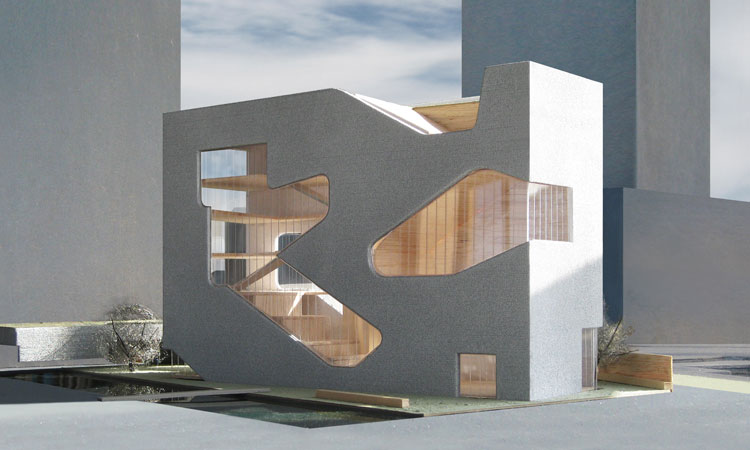Proyecto: Queens Library
Clasificación: Primer premio
Arquitecto: Steven Holl, Chris McVoy
Director proyecto: Filipe Taboada
Equipo proyecto: Rychiee Espinosa, Jeanne Wellinger
Situación: Queens, Nueva York, EEUU
Superficie útil: 1.000 ft2
Estado: En construcción
Fecha concurso: 2010
Fecha construcción: 2010 – 2013
Fecha apertura: 2013
Cliente: New York City Department of Design and Construction, Queens Library
Ingeniería: Robert Silman Associates, ICOR Associates
El sitio localizado en el East River de Nueva York, muestra una magnífica vista de Manhattan, inspirado en el diseño. Un «punto de vista de Manhattan» se creará mediante la creación de un escalera que se eleva desde la llegada del espacio abierto. Esta escalera permite a los usuarios una gran vista hacia la ciudad, flanqueada perpendicularmente por la lectura de tablas en las secciones ascendente respaldado con estanterías.
Existe una clara separación del programa en el área infantil, área de adolescentes y área para adultos. Se puede leer en los cortes tallados de la cara este del edificio, una apertura de fachada de cada área. La sección del edificio de la nueva biblioteca está abierta y fluida, mientras que el plan es compacto, lo que permite el diseño de mayor eficiencia energética y la mayor cantidad de espacio público.
A lo largo del oeste se encuentra un estanque alargado que refleja el agua reciclada, que se afila en los pastos naturales que una vez que creció a la orilla del East River. Ranas, tortugas y peces habitan en esta franja el año natural del agua.
Por el lado de entrada del este, la biblioteca, junto con un bajo pabellón de oficinas forman un jardín de lectura pública con un bosque de árboles ginko. Al subir la escalera en el interior se puede llegar al jardín de la lectura en la azotea con impresionantes vistas. Por la noche la presencia radiante de la nueva biblioteca a lo largo del paseo marítimo se une a la señal de Pepsi y el cartel de «Long Island» en el antiguo pórtico para convertirse en un faro y un icono de invitación para este lugar la nueva comunidad.
El tejido formado por una estructura de hormigón está expuesto y pintado blanco por dentro. El aislamiento exterior es una espuma de aluminio rainskin que da al exterior un sutil brillo y resplandor, sin ser demasiado brillante. Como el material es cien por cien aluminio reciclado.
The prominent site on the East River, facing a magnificent view of Manhattan, inspired the design, which cuts the lines of the main interior circulation route into the west façade. A «Manhattan view» stair rises up from the open arrival space, allowing the users a great view toward the city, flanked perpendicularly by reading tables in ascending sections backed with bookcases. While users may be on computers, the view from the entry is of books, and the view on the way up is of the East River and Manhattan.
The program’s separation into children’s area, teen area and adult area, can be read in the carved cuts of the east face of the building, one façade opening for each area. Yet the programmatic divisions are fluid: not «this is that,» as childhood can return. The building section of the new library is open and flowing, while the plan is compact, allowing for the most energy-efficient design and the greatest amount of public space on the site.
Along the west is an elongated reflecting pond of recycled water, which is edged in the natural grasses that once grew at the bank of the East River. Frogs, turtles, and fish inhabit this year-round natural water strip. On the east entrance side , the library together with a low park office pavilion forms a public reading garden with a bosque of ginko trees. Ascending the stair inside one can reach the rooftop reading garden with amazing panoramic views. At night the glowing presence of the new library along the waterfront joins the Pepsi sign and the «Long Island» sign at the old Gantry to become a beacon and inviting icon for this new community place.
The fabric-formed concrete structure is exposed and painted white inside, while exterior insulation and a foamed aluminum rainskin give the exterior a subtle sparkle and glow, without being overly shiny. As the material is 100 percent recycled aluminum, this outer layer relates to all the green aspects in the new facility.

